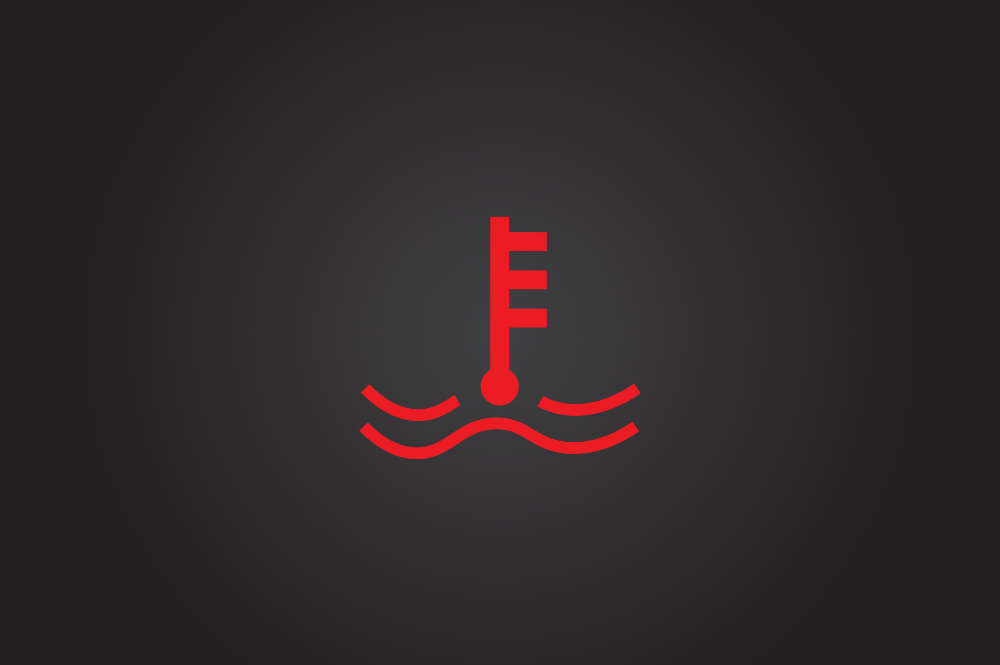Antifreeze, often known as engine coolant, is a colored liquid blended with water to assist your engine in staying cool in hot weather.
Coolant goes throughout the engine block as the temperature outside varies from hot to cold.
It does that to maintain a consistent operating temperature.
So, when you have a problem with a coolant, that might raise some alarms.
In this article, you will learn about the two main types of problems with coolants and how to solve them.
Advertising links are marked with *. We receive a small commission on sales, nothing changes for you.
What Can Be the Problem?

Whenever this happens, you will see a warning light on your car’s dashboard. It isn’t very pleasant, but thankfully you can do something about it.
Let’s first talk about the usual problem when the warning sign goes on.
Low Coolant Level
The first thing you should check when the warning sign comes on is the coolant level in your Porsche Cayenne.
If the coolant level is below the optimal, you should add more coolant liquid.
You may buy pre-mixed coolant that is already diluted with distilled water.
The next option is to purchase full-strength antifreeze diluted with distilled water. Then you can add it to the engine system.
Every automobile manufacturer, including Porsche, has designed or is required to use a specific coolant specific to particular years and models.
Coolants come in various hues to differentiate them, including blue, green, purple, yellow, red, and orange.
If you want to buy, flush, or replace the coolant in your vehicle, it might be tough to conduct research.
In addition, many models will be inconvenient even with “universal” coolants or antifreeze.
Which Color Coolant Should You Use for Porsche Cayenne?
Most Organic Acid Technology (OAT) coolants are:
- Orange
- Yellow
- Red
- Purple
Coolants made with Hybrid Organic Acid Technology are orange and yellow in color.
Then there are coolants that use Inorganic Acid Technology (IAT). They are usually green, although some manufacturers offer them in blue as well.
Always check the container to make sure you’re using the right kind of coolant at the end of the day.
When looking for the right coolant for your Porsche Cayenne, review the owner’s manual as well.
How Much of It Should You Put In Your Porsche Cayenne?
Every make and model needs a slightly different amount of coolant.
Always check your Porsche Cayenne owner’s handbook for the most up-to-date payment information.
If you have any questions about coolant levels, bring your car to the Porsche salon, or give them a call.
Warning: Before checking your coolant level, make sure your car engine runs smoothly.
What Happens if the Coolant in the Porsche Cayenne Runs Out?
For troubles to begin, your Porsche Cayenne does not need to run out of coolant.
If the dilution levels are not within a certain percent range, your Porsche Cayenne engine components will rust, crack, or become damaged.
If you run out of coolant completely, your automobile might be at risk.
In a Porsche Cayenne, How Frequently Should I Change the Coolant?
Typically, you should perform a Porsche Cayenne coolant cleanse every 30,000 miles or two years.
Your vehicle might go without a flush for more extended periods in rare cases.
It’s essential to get your car examined every 15,000 miles.
That is to ensure that the mechanics catch any abnormalities before they cause irreversible harm. It’s better to be cautious than sorry for your Porsche Cayenne engine.
Faulty Coolant Sensor
The next problem would be a broken coolant sensor. That way, your car will constantly give out notices on your dashboard.
The coolant level sensor aims to warn the driver when the coolant level is low, preventing overheating and engine damage.
This assists in detecting leaks and other potentially harmful cooling system issues.
A plastic sensor with a plastic or foam floating beneath the coolant reservoir cover can be used as a coolant level sensor.
They can also be plastic sensors that connect to the radiator or another cooling system component.
The warning light alerts the driver that the coolant level needs to be checked or that the sensor is malfunctioning.
Please have in mind at all times: The Check Coolant warning light may appear to be inconvenient, but it has a purpose.
Of course, the purpose is to alert the driver to potentially unsafe engine conditions.
How To Fix the Issue?
Here are some quick steps for replacing the coolant sensor.
- First, you have to determine that you have to replace the Coolant Level Sensor. Make sure that the coolant level is below the sensor.
- Remove the faulty coolant level sensor from the radiator or reservoir. You can do that by disconnecting the electrical connection and removing it.
- Once the coolant is in place and linked, the new coolant level sensor is replenished. The cooling system is then de-aerated.
- Check the new coolant level sensor for leaks after you fill-up the system and start the engine.
- Put the car through its paces to confirm that the cooling system is working correctly.
Be careful with each step, but there shouldn’t be any problems. If, however, you encounter some, please contact your local Porsche salon.
Symptoms of a Faulty Coolant Sensor Level
- The Check Coolant or Low Coolant indicator comes on and displays even after you fill the coolant off.
- The coolant level is low, yet there are no warning lights on.
You will easily detect the coolant problem just by checking it under the hood.
Conclusion
Hopefully, you found what you’ve been looking for!
Porsche Cayenne’s coolant should not give you terrible headaches. But, keep in mind that you will achieve that by regularly checking your coolant reservoir.

Luna Meschiari is a full-blooded car nut who is well known to local garages, as each article is meticulously researched and peppered with the latest piece of information. Guess what car she’s driving right now? A RAV4 2021 Hybrid. But her heart also sleeps for pickups like the F-150. Get to know Luna better on the about us page.
Advertising links are marked with *. We receive a small commission on sales, nothing changes for you.
